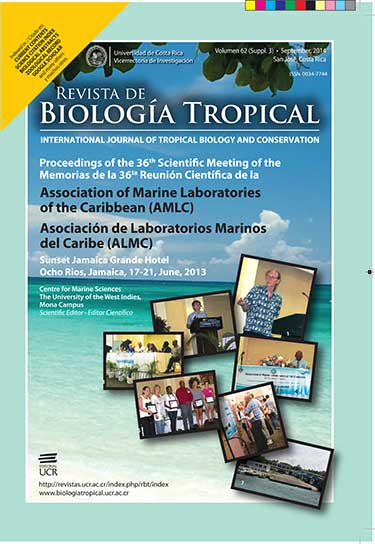Resumen
Un estudio de la pesca submarina en Jamaica durante el 2011 reveló una pesquería mayor que la esperada, que produce aproximadamente 4 000 toneladas por año de todos los tipos de recursos pesqueros. Este nivel de producción esta por encima de lo que se pensaba era una actividad pesquera de pequeña escala. Esta pesquería especializada se ha ampliado aproximadamente en 1% de pescadores a al menos el 10%, en un periodo de 20 años (1991 a 2011). Aunque los peces de coral se dominaran como otros recursos tales como langostas, concha y pulpo. Aunque no era un objetivo del censo se observaron muchos peces juveniles en las capturas con tamaños muy por debajo de su tamaño adulto u óptimo. Un total de 58% pescadores informaron que tendrían dificultad para encontrar otra opción de empleo si la pesca submarina se prohibe. Los pescadores explotan recursos en la plataforma de la isla y también en casi todos los bancos de la costa sobre todo en el Banco de Pedro. Este estudio también muestra que comunmente se práctica la pesca submarina durante la noche con el fin de capturar peces de coral durmiendo. A pesar de que esta actividad es prohibida. Se recomienda que los pescadores se registren y que se regule la actividad. Posibles acciones incluyen considerar la prohibición parcial durante el año o prohibir el uso de equipo de buceo y narguile.
Citas
Aiken, K. A. (1993) Jamaica, Marine Fishery Resources of the Antilles: Lesser Antilles Puerto Rico, Cuba, Jamaica and Hispaniola. FAO Fish Technical Paper, 326, 1160-1180
Aiken, K. A. (2008). The USAID-Protected Areas and Rural Enterprise Project (Jamaica). Sector Position Paper on Fisheries, Consultant’s report.
CFRAMP. (2000). Jamaica National Marine Fisheries Atlas. Fishery Report No. 4. Kingston, Jamaica: CARICOM
Halcrow, S. W. (1998). South Coast Sustainable Development Study: Phase 1. Technical report 2. Government of Jamaica, Kingston, Jamaica: Marine Resources.
Munro, J. L. (1983). Caribbean Coral Reef Fishery Resources. Manila, Philippines: ICLARMP Special Publications.
FWC. (2011). Saltwater Regulations spearing. The Florida Fish and Wildlife Conservation Commission. Retrieved from http://myfwc.com/RULESANDREGS/Saltwater_Regulations_spearing.htm,
Passley, D. (2009). Characterization of Jamaican Spearfishing Activities. Research Report for Research Project course BIOL3018, Department of Life Sciences, Faculty of Pure & Applied Sciences, University of the West Indies, Mona campus.
Passley, D., Aiken K., & Perry, G. (2010). First characterization of the Jamaican spearfishing sub-sector. Proceedings of Gulf and Caribbean Fisheries Institute, 62, 235-240.
Roberts, C. (2007). The Unnatural History of the Sea. Washington D.C.: Island Press.
Sary, Z. (2001). The Small Scale Reef Fishery on the Central North Coast of Jamaica in 2000-2001: A Biological and Socio-Economic Survey. ICLARM, The Islands of the Bahamas, 2008-2011. Retrieved from http://www.bahamas.com/bahamas/regulations-0.
##plugins.facebook.comentarios##

Esta obra está bajo una licencia internacional Creative Commons Atribución 4.0.
Derechos de autor 2014 Revista de Biología Tropical






